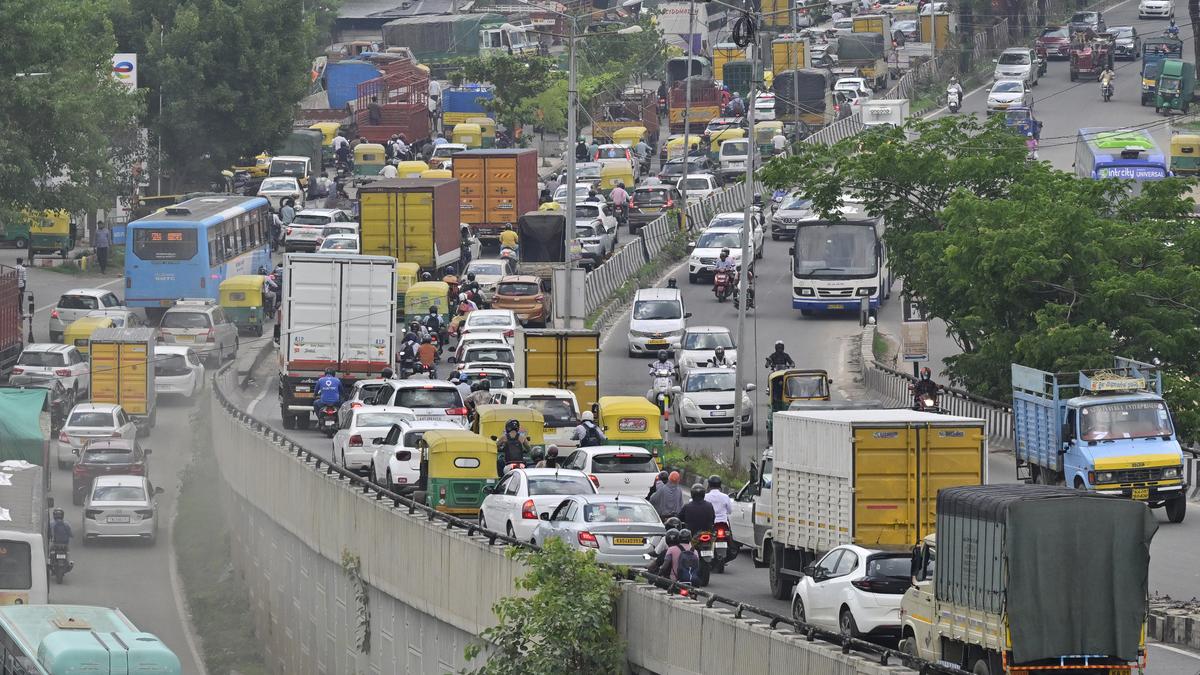
Elevated corridors will boost congestion, not kill it Premium
The Hindu
Flyover as a congestion-killer is an idea that was dumped worldwide decades ago. Yet, the obsession with these elevated, “signal-free” corridors continues. Despite seasoned mobility analysts crying out loud that flyovers only shift congestion and don’t remove it, 17 such behemoths are on the government’s agenda for Namma Bengaluru.
Flyover as a congestion-killer is an idea that was dumped worldwide decades ago. Yet, the obsession with these elevated, “signal-free” corridors continues. Despite seasoned mobility analysts crying out loud that flyovers only shift congestion and don’t remove it, 17 such behemoths are on the government’s agenda for Namma Bengaluru.
The real congestion-killers – a 15,000-plus fleet of BMTC buses, fast-tracked suburban rail and Namma Metro, a robust Bengaluru Metropolitan Land Transport Authority (BMLTA) to plan and coordinate all things mobility – are all in slow motion. Meanwhile, the government announces its decision to build 17 elevated corridors on key arterial roads with a total length of 100kms. The estimated project cost: ₹12,000 crore.
Eight years ago, the proposal to build a steel flyover from Chalukya Circle to Mehkeri Circle had triggered unprecedented public protests. The prospect of a concrete monster slicing through the city’s heart, felling hundreds of fully grown trees, faced a backlash so strong that the project was shelved a year later. However, the idea of such flyovers as the perfect fit for motorised mobility never lost traction among the decision-makers.
Vinay K. Sreenivasa from the Bengaluru Bus Prayanikara Vedike attributes this ‘stubbornness’ of seeing only flyovers /elevated corridors as development to an economy built around them. “It is easier to profit from such projects than, say, a Bus Rapid Transit System (BRTS). Although BRTS will make more money, for some reason they see only the corridors as development,” he elaborates.
Since the official mobility policy has for decades favoured the motorists, the latter tend to approve and even demand such projects. As Vinay points out, “Car-goers ask for this. They don’t want bus lanes, they don’t want public transport. They just want their cars to go fast.”
Once obsessed with moving cars and SUVs and not people, developed cities are now demolishing flyovers to make way for shared mobility. Private, personal vehicles are being disincentivised and made prohibitively expensive to drive within the city. But here, notes Vinay, even the big industrialists are backing and building elevated corridors such as the one on Hosur Road. “They are the ones who have widely travelled. They can see what works and what doesn’t, but they are pushing for these projects,” he laments.
The city has an estimated population of about 15 million (1.5 crore). “Assuming that the per capita trip rate is close to 1.2 where everyone –including senior citizens and children – is doing 1.2 non-walking, motorised trips, you have 18 million trips every day. While bus travel accounts for about 4 to 4.5 million trips and the Metro about a million, you have 12.5 million trips to address,” says Pawan Mulukutla, Executive Director. Transport at the World Resources Institute (WRI) India.













